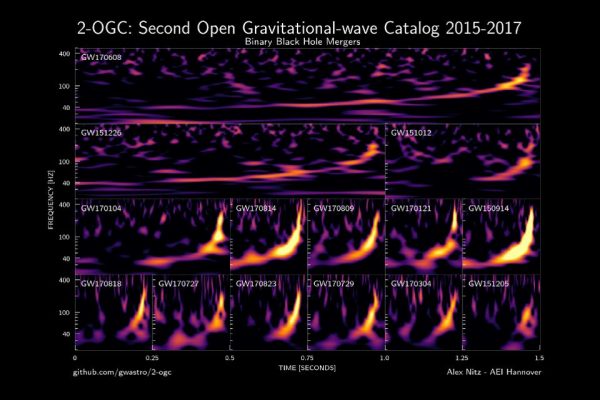Public Data Allows Astronomers To Discover New Black Hole Mergers – Forbes

Confirmed black hole mergers from public data.
Nitz, Alexander H., et al.
One of my favorite things about astronomy is its long tradition of releasing data to the public. Some observatories make the data public as it comes in, while others have an embargo period, where the astronomers who gathered the data have some exclusive time. But in the end, most of the data becomes publicly available.
This is a huge boon for scientific discoveries. It means that a sky survey used to discover distant quasars can also be used to study binary stars. Or a search or Earth-approaching asteroids can lead to the discovery of new black holes. It also means that when a team makes a discovery, other teams can look at the same data and perhaps improve on it.
As a case in point, the LIGO and Virgo gravitational wave observatories are currently in their third run of observations. Their first two observation runs captured lots of black hole mergers and even a neutron star merger. When the first two runs were released to the public, a new team of astronomers decided to analyze the data for themselves.
The most difficult part of gravitational wave astronomy is picking out real merger signals from all the noise. LIGO and Virgo are so sensitive that most of the fluctuations they detect are noise. The data has to be compared to models of high-mass mergers to see how well they agree. When they agree with a model and are seen in both observatories, then it can be confirmed as a merger event.
Of course, any time you need a model to confirm your observations, there can be debate over whether your model is correct. How do you test your model if you need data to confirm your model? When the new team went through the data they applied their own models, but they also looked at the statistical trends of known mergers. They confirmed 14 black hole mergers, but also found an extra one. One that was buried in the noise. They also released their data to the public, so anyone can analyze things for themselves.
The team estimates that their new approach improves detected sensitivity by about 50%. As more data becomes available, their method could improve things even more. It’s a great example of why making data and results public is such a powerful tool for science.
Reference: Nitz, Alexander H., et al. “2-OGC: Open Gravitational-wave Catalog of binary mergers from analysis of public Advanced LIGO and Virgo data.” The Astrophysical Journal, Volume 891, Number 2 (2020).






